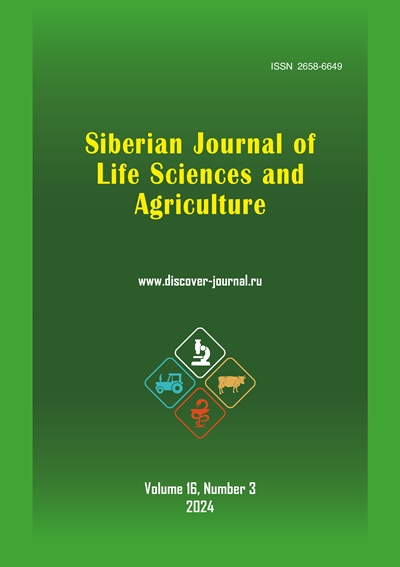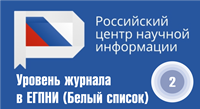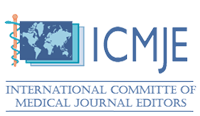ОЦЕНКА БЕЗОПАСНОСТИ РЯДА РАСТИТЕЛЬНЫХ МЕТАБОЛИТОВ – ПЕРСПЕКТИВНЫХ ГЕРОПРОТЕКТОРОВ В ИССЛЕДОВАНИИ IN VIVO
Аннотация
Обоснование. Старение происходит наряду с прогрессирующим снижением физических функций организма и повышенным риском возрастных хронических заболеваний. Для лечения и профилактики хронических заболеваний в том числе используют полифенолы, например, мангиферин, кверцетин и транс-коричная кислота. Токсикологические исследования имеют важное значение в сфере биомедицинских исследований, так как некоторые экстрагированные полифенолы в высоких дозах могут способствовать развитию и прогрессированию рака и других заболеваний. Настоящее исследование направлено на оценку токсикологической безопасности выделенных ранее фенольных соединений из растений Сибирского Федерального округа.
Материалы и методы. В качестве модельного организма выбраны грызуны. Изучение мутагенных и антимутагенных свойств проводили при помощи микроядерного теста клеток костного мозга. Оценку цитотоксичности in vitro вели с помощью МТТ-теста.
Результаты. Изученные полифенолы в дозах 50,0 и 100,0 мг/кг не обладают мутагенными свойствами. Мангифери и кверцетин в дозе 50,0 мг/кг не обладают антимутагенным действием. При этом транс-коричная кислота в той же концентрации обладает антимутагенными действием. Мангиферин в концентрациях от 4,2 до 16,7 мкг/мл оказывает цитотоксическое действие. Транс-коричная кислота не обладает цитотоксичностью (при 2,1–33,3 мкг/мл). Кверцетин в концентрации 0,21 и 1,67 мкг/мл цитотоксическое действие, а в концентрациях 3,33 мкг/мл увеличивает жизнеспособность спленоцитов, предположительно за счет антиоксидантных свойств.
Заключение. Безопасность или низкая токсичность являются решающим преимуществом дальнейшего использования полифенолов в качестве перспективных геропротекторов. Установлено, что дальнейшее изучение биологически активных веществ (мангиферина, кверцетина и транс-коричной кислоты) является целесообразным.
Работа выполнена в рамках государственного задания по теме «Разработка биологически активных добавок, состоящих из метаболитов растительных объектов in vitro, для защиты населения от преждевременного старения» (проект FZSR-2024-0008) с использованием оборудования ЦКП «Инструментальные методы анализа в области прикладной биотехнологии» на базе КемГУ.
Скачивания
Литература
Список литературы
Биофункциональная активность in vivo хлорогеновой кислоты и биоханина А, выделенных из экстрактов каллусной культуры Trifolium pratense L. / Милентьева И.С., Веснина А.Д., Федорова А.М., Остапова Е.В., Ларичев Т.А. // Техника и технология пищевых производств. 2023. Т. 53. № 4. С. 754–765. https://doi.org/10.21603/2074-9414-2023-4-2475
Глушанко В.С. Основы медицинской статистики: учеб.-метод. Посо-бие. Витебск: ВГМУ, 2012. 155 с.
ГОСТ Р ИСО 16269-4–2017. Статистическое представление данных. Часть 4: Выявление и обработка выбросов. М.: Стандартинформ. 2017. 53 с.
Руководство по проведению доклинических исследований лекар-ственных средств. Часть первая / под ред. А.Н. Миронова. М.: Гриф и К, 2012. 944 с.
A Cocktail of Polyherbal Bioactive Compounds and Regular Mobility Training as Senolytic Approaches in Age-dependent Alzheimer’s: the In Silico Analysis, Lifestyle Intervention in Old Age / Hajibabaie F., Abedpoor N., Taghian F., Safavi K. // J Mol Neurosci. 2023. Vol. 73. P. 171–184. https://doi.org/10.1007/s12031-022-02086-8
A comparative study on the effectiveness of cis- and trans-form of cinnamic acid treatments for inhibiting invasive activity of human lung adenocarcinoma cells / Yen G.-C., Chen Ye.-L., Sun F.-M., Chiang Yu.-L., Lu S.-H., Weng C.-J. // Eur J Pharm Sci. 2011. Vol. 44(3). P. 281–287. https://doi.org/10.1016/j.ejps.2011.08.006
A critical review of the data related to the safety of quercetin and lack of evidence of in vivo toxicity, including lack of genotoxic/carcinogenic properties / Harwood M., Danielewska-Nikiel B., Borzelleca J.F., Flamm G.W., Williams G.M., Lines T.C. // Food Chem Toxicol. 2007. Vol. 45(11). P. 2179–2205. https://doi.org/10.1016/j.fct.2007.05.015
A systematic review on hepatoprotective activity of quercetin against vari-ous drugs and toxic agents: Evidence from preclinical studies / Pingili R.B., Challa S.R., Pawar A.K., Toleti V., Kodali T., Koppula S. // Phytotherapy Research. 2020. Vol. 34. P. 5–32. https://doi.org/10.1002/ptr.6503
A toxicological evaluation of mango leaf extract (Mangifera indica) con-taining 60% mangiferin / Reddeman R.A., Glavits R., Endres J.R., Clewell A.E., Hirka G., Vertesi A., Beres E., Szakonyine I.P. // J. Toxicol. 2019. Vol. 2019. P. 4763015. https://doi.org/10.1155/2019/4763015
Acute toxicity, antidepressive and mao inhibitory activity of mangiferin isolated from hypericum aucheri / Dimitrov M., Nikolova I., Benbasat N., Kitanov G., Danchev N. // Biotechnol. Biotechnol. Equip. 2011. Vol. 25. P. 2668–2671. https://doi.org/10.5504/BBEQ.2011.0099
Adverse effects of plant food supplements and botanical preparations: a systematic review with critical evaluation of causality / Di Lorenzo C., Ceschi A., Kupferschmidt H., Lude S., De Souza N.E., Dos Santos A., Colombo F., Frigerio G., Norby K., Plumb J., Finglas P., Restani P. // Br J Clin Pharmacol. 2015. Vol. 79. P. 578–592. https://doi.org/10.1111/bcp.12519
Adverse effects of plant food supplements and plants consumed as food: results from the poisons Centres-based PlantLIBRA study / Lüde S., Vecchio S., Sinno-Tellier S., Dopter A., Mustonen H., Vucinic S., Jonsson B., Müller D., Fruchtengarten L.V.G., Hruby K., Nascimento E.D.S., Di Lorenzo C., Restani P., Kupferschmidt H., Ceschi A. // Phytother Res. 2016. Vol. 30. P. 988–996. https://doi.org/10.1002/ptr.5604
Aging Hallmarks and the Role of Oxidative Stress / Maldonado E., Mo-rales-Pison S., Urbina F., Solari A. // Antioxidants. 2023. Vol. 12(3). P. 651. https://doi.org/10.3390/antiox12030651
Alaiya M.A., Odeniyi M.A. Utilisation of Mangifera indica plant extracts and parts in antimicrobial formulations and as a pharmaceutical excipient: a review // Futur J Pharm Sci. 2023. Vol. 9(1). P. 29. https://doi.org/10.1186/s43094-023-00479-z
Antimutagenicity of mangiferin purified from Salacia chinensis Linn. / Selvam S.P., Magesh V., Raja V., Mahendran T.S., Muthumary J., Kalaichelvan P.T., Murugesan K. // Internat. Multidiscipl. Res. J. 2011. Vol. 1(1). P. 1–5. https://updatepublishing.com/journal/index.php/imrj/article/view/1460
Anti-proliferative and immunomodulatory potencies of cinnamon oil on Ehrlich ascites carcinoma bearing mice / Morsi D.S., El‑Nabi S.H., Elmaghraby M.A., Ali O.A.A., Fayad E., Khalifa S.A.M., El-Seedi H.R., El-Garawani I.M. // Sci. Rep. 2022. Vol. 12. P. 11839. https://doi.org/10.1038/s41598-022-14770-1
Application of rosemary and eucalyptus essential oils on the preservation of cucumber fruit / Xylia P., Chrysargyris A., Shahwar D., Ahmed Z.F.R., Tzortzakis N. // Horticulturae. 2022. Vol. 8. P. 774. https://doi.org/10.3390/horticulturae8090774
Athipornchai A., Pabunrueang P., Trakulsujaritchok T. Mangiferin loaded carrageenan/chitosan core-shell hydrogel beads: Preparation, characterization and proposed application // Food Hydrocolloids. 2024. Vol. 147(A). P. 109394. https://doi.org/10.1016/j.foodhyd.2023.109394
Bambino K., Chu J. Chapter Nine – Zebrafish in Toxicology and Environmental Health // Current Topics in Developmental Biology, Editor(s): K.C. Sadler, New York: Academic Press, 2017. Vol. 124. P. 331–367. https://doi.org/10.1016/bs.ctdb.2016.10.007
Bioactive compounds, antioxidant and antimicrobial activities of Arum maculatum leaves extracts as affected by various solvents and extraction methods / Farahmandfar R., Kenari R.E., Asnaashari M., Shahrampour D., Bakhshandeh T. // Food Sci Nutr. 2019. Vol. 7. P. 465–475. https://doi.org/10.1002/fsn3.815
Bioactivity and Molecular Docking Studies of Derivatives from Cinnamic and Benzoic Acids / Perez-Castillo Yu., Lima T.C., Ferreira A.R., Silva C.R., Cam-pos R.S., Neto J.B.A., Magalhães H.I.F., Cavalcanti B.C., Júnior H.V.N., de Sousa D.P. // Biomed Res Int. 2020. Vol. 2020. P. 6345429. https://doi.org/10.1155/2020/6345429
Bioavailability of quercetin: Problems and promises / Cai X., Fang Z., Dou J., Yu A., Zhai G. // Curr. Med. Chem. 2013. Vol. 20. P. 2572–2582. https://doi.org/10.2174/09298673113209990120
Biologically active compounds in Scutellaria baicalensis L. callus extract: Phytochemical analysis and isolation / Milentyeva I.S., Fedorova A.M., Larichev T.A., Altshuler O.G. // Foods and Raw Materials. 2023. Vol. 11(1). P. 172–186. https://doi.org/10.21603/2308-4057-2023-1-564
Comparative study on antioxidant activity of different varieties of com-monly consumed legumes in India / Marathe S.A., Rajalakshmi V., Jamdar S.N., Sharma A. // Food and Chemical Toxicology. 2011. Vol. 49(9). P. 2005–2012. https://doi.org/10.1016/j.fct.2011.04.039
Czubinski J., Dwiecki K. A review of methods used for investigation of protein–phenolic compound interactions // Int J Food Sci Technol. 2017. Vol. 52(3). P. 573–585. http://dx.doi.org/10.1111/ijfs.13339
Dietary administration of high doses of pterostilbene and quercetin to mice is not toxic / Ruiz M.J., Fernandez M., Pico Y., Manes J., Asensi M., Carda C., Asensio G., Estrela J.M. // J Agric Food Chem. 2009. Vol. 57(8). P. 3180–3186. https://doi.org/10.1021/jf803579e
Effective synthesis of magnetic porous molecularly imprinted polymers for efficient and selective extraction of cinnamic acid from apple juices / Shi S., Fan D., Xiang H., Li H. // Food Chem. 2017. Vol. 237. P. 198–204. https://doi.org/10.1016/j.foodchem.2017.05.086
Effects of bioactive substances isolated from Siberian medicinal plants on the lifespan of Caenorhabditis elegans / Faskhutdinova E.R., Sukhikh A.S., Le V.M., Minina V.I., Khelef M.E.A., Loseva A.I. // Foods and Raw Materials. 2022. Vol. 10(2). P. 340–352. http://doi.org/10.21603/2308-4057-2022-2-544
Evaluation of genotoxicity and DNA protective effects of mangiferin, a glucosylxanthone isolated from Mangifera indica L. stem bark extract / Rodeiro I., Hernandez S., Morffi J., Herrera J.A., Gómez-Lechón M.J., Delgado R., Espinosa-Aguirre J.J. // Food and Chemical Toxicology. 2012. Vol. 50(9). P. 3360–3366. https://doi.org/10.1016/j.fct.2012.06.032
Evaluation of Toxic Oxidant Activity for Pure Cinnamic Acid in Albino Mice / Mousa N.Kh., Al-Zubiadi L.Ah., Ahmed I.Ab. // Journal of Madent Alelem College. 2011. Vol. 3(2). P. 38–50.
Extract of Aquilaria crassna leaves and mangiferin are vasodilators while showing no cytotoxicity / Wisutthathum S., Kamkaew N., Inchan A., Chatturong U., Paracha T.U., Ingkaninan K., Wongwad E., Chootip K. // J Tradit Complement Med. 2019. Vol. 9(4). P. 237–242. https://doi.org/10.1016/j.jtcme.2018.09.002
Final Report 2647/23. Induction of micronuclei in the bone marrow of treated mice. Covance Inc. 2008. 58 p.
Gold-Smith F., Fernandez A., Bishop K. Mangiferin and Cancer: Mecha-nisms of Action // Nutrients. 2016. Vol. 8(7). P. 396. https://doi.org/10.3390/nu8070396
Heim K.E., Tagliaferro A.R., Bobilya D.J. Flavonoid antioxidants: chemistry, metabolism and structure-activity relationships // J Nutr Biochem. 2002. Vol. 13(10). P. 572–584. https://doi.org/10.1016/S0955-2863(02)00208-5
High-level production of trans-cinnamic acid by fed-batch cultivation of Escherichia coli / Bang H.B., Lee K., Lee Yo.J., Jeong K.J. // Process Biochemistry. 2018. Vol. 68. P. 30–36. https://doi.org/10.1016/j.procbio.2018.01.026
Hong J., Stubbins R.E., Smith R.R. Differential susceptibility to obesity between male, female and ovariectomized female mice // Nutr. J. 2009. Vol. 8. P. 11. https://doi.org/10.1186%2F1475-2891-8-11
Khosravi A., Razavi S.H. Therapeutic effects of polyphenols in fermented soybean and black soybean products // J Funct Foods. 2021. Vol. 81. P. 104467. https://doi.org/10.1016/j.jff.2021.104467
Kotiloglu D., Acet T., Ozcan K. Phytochemical profile and biological ac-tivity of a therapeutic orchid from Anatolia: Dactylorhiza romana subsp. Georgica // Food Measure. 2020. Vol. 14. P. 3310–3318. https://doi.org/10.1007/s11694-020-00566-2
Mangiferin: a review of dietary sources, absorption, metabolism, bioavailability, and safety / Mei S., Perumal M., Battino M., Kitts D.D., Xiao J., Ma H., Chen X. // Crit Rev Food Sci Nutr. 2023. Vol. 63(18). P. 3046–3064. https://doi.org/10.1080/10408398.2021.1983767
Mangiferin: An effective therapeutic agent against several disorders (Re-view) / Du S., Liu H., Lei T., Xie X., Wang H., He X., Tong R., Wang Y. // Mol. Med. Rep. 2018. Vol. 18(6). P. 4775-4786. https://doi.org/10.3892/mmr.2018.9529
Middleton E., Kandaswami C., Theoharides T.C. The Effects of Plant Flavonoids on Mammalian Cells:Implications for Inflammation, Heart Disease, and Cancer // Pharmacological Reviews. 2000. Vol. 52(4). P. 673–751. https://pharmrev.aspetjournals.org/content/52/4/673
NF-κB inhibitors gifted by nature: The anticancer promise of polyphenol compounds / Guan C., Zhou X., Li H., Ma X., Zhuang J. // Biomed Pharmacother. 2022. Vol. 156. P. 113951. https://doi.org/10.1016/j.biopha.2022.113951
Nutrition and the hallmarks of aging / Giudici K.V. // J Nutr Health Aging, Springer, 2021. Vol. 25. P. 1039–1041. https://doi.org/10.1007/s12603-021-1686-3
Okamoto T. Safety of quercetin for clinical application // Int J Mol Med. 2005. Vol. 16(2). P. 275–278. https://doi.org/10.3892/ijmm.16.2.275
Pharmacokinetic study of mangiferin in human plasma after oral admin-istration / Hou S., Wang F., Li Yi., Li Yi., Wang M., Sun D., Sun C. // Food Chemistry. 2012. Vol. 132(1). P. 289–294. https://doi.org/10.1016/j.foodchem.2011.10.079
Polyphenols: extraction methods, Antioxidative action, bioavailability and Anticarcinogenic effects / Mojzer E.B., Hrncic M.K., Skerget M., Knez Z., Bren U. // Molecules. 2016. Vol. 21. P. 901. https://doi.org/10.3390/molecules21070901
Potent chemopreventive effect of mangiferin on lung carcinogenesis in ex-perimental Swiss albino mice / Rajendran P., Rengarajan T., Nishigaki I., Ekam-baram G., Sakthisekaran D. // J. Cancer Res. Ther. 2014. Vol. 10. P. 1033–1039. https://doi.org/10.4103/0973-1482.137966
Prabu S.M., Muthumani M., Shagirtha K. Quercetin potentially attenuates cadmium induced oxidative stress mediated cardiotoxicity and dyslipidemia in rats // Eur. Rev. Med. Pharmacol. Sci. 2013. Vol. 17. P. 582–595. https://www.europeanreview.org/wp/wp-content/uploads/582-595.pdf
Production of trans-cinnamic acid by whole-cell bioconversion from L-phenylalanine in engineered Corynebacterium glutamicum / Son J., Jang J.H., Choi I.H., Lim C.G., Jeon E.J., Bang H.B., Jeong K.J. // Microb Cell Fact. 2021. Vol. 20. P. 145. https://doi.org/10.1186/s12934-021-01631-1
Quercetin, Inflammation and Immunity / Li Y., Yao J., Han C., Yang J., Chaudhry M.T., Wang S., Liu H., Yin Y. // Nutrients. 2016. Vol. 8(3). P. 167. https://doi.org/10.3390%2Fnu8030167
Recent Formulation Advances of Mangiferin / Barakat S., Nasr M., Ahmed R.F., Mortada N. // Rev. Bras. Farmacogn. 2022. Vol. 32. P. 871–882. https://doi.org/10.1007/s43450-022-00297-z
Role of Quercetin in chemoprevention against wide range of carcinogens and mutagens / Shivakumar S., Tadakaluru Ya.L., Raja, Ya. Sannidhi, R. Sekhar P.C. // Int. J. Drug Deliv. 2017. Vol. 9(9). P. 9–17. http://dx.doi.org/10.5138/09750215.2040
Scalbert A., Johnson I.T., Saltmarsh M. Polyphenols: antioxidants and beyond // Am J Clin Nutr. 2005. Vol 81(1). P. 215S–217S. https://doi.org/10.1093/ajcn/81.1.215S
Some characteristics of quercetin-induced cytotoxicity on rat thymocytes under in vitro condition / Nishimura Yu., Oyama T.B., Sakanashi Yo., Oyama T.M., Matsui H., Okano Yo., Oyama Ya. // Toxicology in Vitro. 2008. Vol. 22(4). P. 1002–1007. https://doi.org/10.1016/j.tiv.2008.02.006
Tackling Atherosclerosis via Selected Nutrition / Vesnina A., Prosekov A., Atuchin V., Minina V., Ponasenko A. // Int J Mol Sci. 2022. Vol. 23(15). P. 8233. https://doi.org/10.3390/ijms23158233
The posterity of Zebrafish in paradigm of in vivo molecular toxicological profiling / Verma S.K., Nandi A., Sinha A., Patel P., Mohanty S., Jha E., Jena S., Kumari P., Ghosh A., Jerman I., Chouhan R.S., Dutt A., Samal S.K., Mishra Yo.K., Varma R.S., Panda P.K., Kaushik N.K., Singh D., Suar M. // Biomed Pharmacother. 2024. Vol. 171. P. 116160. https://doi.org/10.1016/j.biopha.2024.116160
Therapeutic Efficacy of Polyphenol-Rich Fraction of Boesenbergia rotunda in Diabetic Rats: A Focus on Hypoglycemic, Antihyperlipidemic, Carbohydrate Metabolism, Antioxidant, Anti-Inflammatory and Pancreato-Protective Activities / Wang T., Liu C., Shu S., Zhang Q., Olatunji O.J. // Front. Biosci. (Landmark Ed). 2022. Vol. 27(7). P. 206. https://doi.org/10.31083/j.fbl2707206
Vanhooren V., Libert C. The mouse as a model organism in aging research: Usefulness, pitfalls and possibilities // Ageing Res Rev. 2013. Vol. 12(1). P. 8–21. https://doi.org/10.1016/j.arr.2012.03.010
Washington D.C. Guide for the Care and Use of Laboratory Animals: Eighth Edition. The National Academies Press, 2011. 246 p.
Yehia R.S., Altwaim S.A. An Insight into In Vitro Antioxidant, Antimicrobial, Cytotoxic, and Apoptosis Induction Potential of Mangiferin, a Bioactive Compound Derived from Mangifera indica // Plants. 2023. Vol. 12. P. 1539. https://doi.org/10.3390/plants12071539
References
Biofunktsional'naya aktivnost' in vivo khlorogenovoy kisloty i biokhanina A, vydelennykh iz ekstraktov kallusnoy kul'tury Trifolium pratense L. [Chlorogenic acid and Biohanin a from Trifolium pratense L. callus culture extract: functional activity in vivo] / Milentyeva I.S., Vesnina A.D., Fedorova A.M., Ostapova E.V., Larichev T.A. Tekhnika i tekhnologiya pishchevykh proizvodstv [Food Processing: Techniques and Technology], 2023, vol. 53(4), pp. 754–765. https://doi.org/10.21603/2074-9414-2023-4-2475
Glushanko V.S. Osnovy meditsinskoy statistiki [Basic medical statistics]: study. -method. manual. Vitebsk: VGMU, 2012, 155 p.
GOST R ISO 16269-4–2017. Statisticheskoe predstavlenie dannykh. Chast' 4: Vyyavlenie i obrabotka vybrosov [Statistical presentation. Part 4: Identification and treatment of emissions]. М.: Standinform, 2017, 53 p.
Rukovodstvo po provedeniyu doklinicheskikh issledovaniy lekarstvennykh sredstv. Chast' pervaya [Guidelines for pre-clinical drug research. Part One] / under editor A.N. Mironova. M.: Griff and K, 2012, 944 p.
A Cocktail of Polyherbal Bioactive Compounds and Regular Mobility Training as Senolytic Approaches in Age-dependent Alzheimer’s: the In Silico Analysis, Lifestyle Intervention in Old Age / Hajibabaie F., Abedpoor N., Taghian F., Safavi K. J Mol Neurosci, 2023, vol. 73, pp. 171–184. https://doi.org/10.1007/s12031-022-02086-8
A comparative study on the effectiveness of cis- and trans-form of cinnamic acid treatments for inhibiting invasive activity of human lung adenocarcinoma cells / Yen G.-C., Chen Ye.-L., Sun F.-M., Chiang Yu.-L., Lu S.-H., Weng C.-J. Eur J Pharm Sci, 2011, vol. 44(3), pp. 281–287. https://doi.org/10.1016/j.ejps.2011.08.006
A critical review of the data related to the safety of quercetin and lack of evidence of in vivo toxicity, including lack of genotoxic/carcinogenic properties / Harwood M., Danielewska-Nikiel B., Borzelleca J.F., Flamm G.W., Williams G.M., Lines T.C. Food Chem Toxicol, 2007, vol. 45(11), pp. 2179–2205. https://doi.org/10.1016/j.fct.2007.05.015
A systematic review on hepatoprotective activity of quercetin against vari-ous drugs and toxic agents: Evidence from preclinical studies / Pingili R.B., Challa S.R., Pawar A.K., Toleti V., Kodali T., Koppula S. Phytotherapy Research, 2020, vol. 34, pp. 5–32. https://doi.org/10.1002/ptr.6503
A toxicological evaluation of mango leaf extract (Mangifera indica) con-taining 60% mangiferin / Reddeman R.A., Glavits R., Endres J.R., Clewell A.E., Hirka G., Vertesi A., Beres E., Szakonyine I.P. J. Toxicol, 2019, vol. 2019, pp. 4763015. https://doi.org/10.1155/2019/4763015
Acute toxicity, antidepressive and mao inhibitory activity of mangiferin isolated from hypericum aucheri / Dimitrov M., Nikolova I., Benbasat N., Kitanov G., Danchev N. Biotechnol. Biotechnol. Equip, 2011, vol. 25, pp. 2668–2671. https://doi.org/10.5504/BBEQ.2011.0099
Adverse effects of plant food supplements and botanical preparations: a systematic review with critical evaluation of causality / Di Lorenzo C., Ceschi A., Kupferschmidt H., Lude S., De Souza N.E., Dos Santos A., Colombo F., Frigerio G., Norby K., Plumb J., Finglas P., Restani P. Br J Clin Pharmacol, 2015, vol. 79, pp. 578–592. https://doi.org/10.1111/bcp.12519
Adverse effects of plant food supplements and plants consumed as food: results from the poisons Centres-based PlantLIBRA study / Lüde S., Vecchio S., Sinno-Tellier S., Dopter A., Mustonen H., Vucinic S., Jonsson B., Müller D., Fruchtengarten L.V.G., Hruby K., Nascimento E.D.S., Di Lorenzo C., Restani P., Kupferschmidt H., Ceschi A. Phytother Res, 2016, vol. 30, pp. 988–996. https://doi.org/10.1002/ptr.5604
Aging Hallmarks and the Role of Oxidative Stress / Maldonado E., Mo-rales-Pison S., Urbina F., Solari A. Antioxidants, 2023, vol. 12(3), p. 651. https://doi.org/10.3390/antiox12030651
Alaiya M.A., Odeniyi M.A. Utilisation of Mangifera indica plant extracts and parts in antimicrobial formulations and as a pharmaceutical excipient: a review. Futur J Pharm Sci, 2023, vol. 9(1), p. 29. https://doi.org/10.1186/s43094-023-00479-z
Antimutagenicity of mangiferin purified from Salacia chinensis Linn. / Selvam S.P., Magesh V., Raja V., Mahendran T.S., Muthumary J., Kalaichelvan P.T., Murugesan K. Internat. Multidiscipl. Res. J, 2011, vol. 1(1), pp. 1–5. https://updatepublishing.com/journal/index.php/imrj/article/view/1460
Anti-proliferative and immunomodulatory potencies of cinnamon oil on Ehrlich ascites carcinoma bearing mice / Morsi D.S., El‑Nabi S.H., Elmaghraby M.A., Ali O.A.A., Fayad E., Khalifa S.A.M., El-Seedi H.R., El-Garawani I.M. Sci. Rep, 2022, vol. 12, p. 11839. https://doi.org/10.1038/s41598-022-14770-1
Application of rosemary and eucalyptus essential oils on the preservation of cucumber fruit / Xylia P., Chrysargyris A., Shahwar D., Ahmed Z.F.R., Tzortzakis N. Horticulturae, 2022, vol. 8, p. 774. https://doi.org/10.3390/horticulturae8090774
Athipornchai A., Pabunrueang P., Trakulsujaritchok T. Mangiferin loaded carrageenan/chitosan core-shell hydrogel beads: Preparation, characterization and proposed application. Food Hydrocolloids, 2024, vol. 147(A), p. 109394. https://doi.org/10.1016/j.foodhyd.2023.109394
Bambino K., Chu J. Chapter Nine – Zebrafish in Toxicology and Environmental Health // Current Topics in Developmental Biology, Editor(s): K.C. Sadler, New York: Academic Press, 2017, vol. 124, pp. 331–367. https://doi.org/10.1016/bs.ctdb.2016.10.007
Bioactive compounds, antioxidant and antimicrobial activities of Arum maculatum leaves extracts as affected by various solvents and extraction methods / Farahmandfar R., Kenari R.E., Asnaashari M., Shahrampour D., Bakhshandeh T. Food Sci Nutr, 2019, vol. 7, pp. 465–475. https://doi.org/10.1002/fsn3.815
Bioactivity and Molecular Docking Studies of Derivatives from Cinnamic and Benzoic Acids / Perez-Castillo Yu., Lima T.C., Ferreira A.R., Silva C.R., Cam-pos R.S., Neto J.B.A., Magalhães H.I.F., Cavalcanti B.C., Júnior H.V.N., de Sousa D.P. Biomed Res Int, 2020, vol. 2020, p. 6345429. https://doi.org/10.1155/2020/6345429
Bioavailability of quercetin: Problems and promises / Cai X., Fang Z., Dou J., Yu A., Zhai G. Curr. Med. Chem, 2013, vol. 20, pp. 2572–2582. https://doi.org/10.2174/09298673113209990120
Biologically active compounds in Scutellaria baicalensis L. callus extract: Phytochemical analysis and isolation / Milentyeva I.S., Fedorova A.M., Larichev T.A., Altshuler O.G. Foods and Raw Materials, 2023, vol. 11(1), pp. 172–186. https://doi.org/10.21603/2308-4057-2023-1-564
Comparative study on antioxidant activity of different varieties of com-monly consumed legumes in India / Marathe S.A., Rajalakshmi V., Jamdar S.N., Sharma A. Food and Chemical Toxicology, 2011, vol. 49(9), pp. 2005–2012. https://doi.org/10.1016/j.fct.2011.04.039
Czubinski J., Dwiecki K. A review of methods used for investigation of protein–phenolic compound interactions. Int J Food Sci Technol, 2017, vol. 52(3), pp. 573–585. http://dx.doi.org/10.1111/ijfs.13339
Dietary administration of high doses of pterostilbene and quercetin to mice is not toxic / Ruiz M.J., Fernandez M., Pico Y., Manes J., Asensi M., Carda C., Asensio G., Estrela J.M. J Agric Food Chem, 2009, vol. 57(8), pp. 3180–3186. https://doi.org/10.1021/jf803579e
Effective synthesis of magnetic porous molecularly imprinted polymers for efficient and selective extraction of cinnamic acid from apple juices / Shi S., Fan D., Xiang H., Li H. Food Chem, 2017, vol. 237, pp. 198–204. https://doi.org/10.1016/j.foodchem.2017.05.086
Effects of bioactive substances isolated from Siberian medicinal plants on the lifespan of Caenorhabditis elegans / Faskhutdinova E.R., Sukhikh A.S., Le V.M., Minina V.I., Khelef M.E.A., Loseva A.I. Foods and Raw Materials, 2022, vol. 10(2), pp. 340–352. http://doi.org/10.21603/2308-4057-2022-2-544
Evaluation of genotoxicity and DNA protective effects of mangiferin, a glucosylxanthone isolated from Mangifera indica L. stem bark extract / Rodeiro I., Hernandez S., Morffi J., Herrera J.A., Gómez-Lechón M.J., Delgado R., Espinosa-Aguirre J.J. Food and Chemical Toxicology, 2012, vol. 50(9), pp. 3360–3366. https://doi.org/10.1016/j.fct.2012.06.032
Evaluation of Toxic Oxidant Activity for Pure Cinnamic Acid in Albino Mice / Mousa N.Kh., Al-Zubiadi L.Ah., Ahmed I.Ab. Journal of Madent Alelem College, 2011, vol. 3(2), pp. 38–50.
Extract of Aquilaria crassna leaves and mangiferin are vasodilators while showing no cytotoxicity / Wisutthathum S., Kamkaew N., Inchan A., Chatturong U., Paracha T.U., Ingkaninan K., Wongwad E., Chootip K. J Tradit Complement Med, 2019, vol. 9(4), pp. 237–242. https://doi.org/10.1016/j.jtcme.2018.09.002
Final Report 2647/23. Induction of micronuclei in the bone marrow of treated mice. Covance Inc, 2008, 58 p.
Gold-Smith F., Fernandez A., Bishop K. Mangiferin and Cancer: Mecha-nisms of Action. Nutrients, 2016, vol. 8(7), p. 396. https://doi.org/10.3390/nu8070396
Heim K.E., Tagliaferro A.R., Bobilya D.J. Flavonoid antioxidants: chemistry, metabolism and structure-activity relationships. J Nutr Biochem, 2002, vol. 13(10), pp. 572–584. https://doi.org/10.1016/S0955-2863(02)00208-5
High-level production of trans-cinnamic acid by fed-batch cultivation of Escherichia coli / Bang H.B., Lee K., Lee Yo.J., Jeong K.J. Process Biochemistry, 2018, vol. 68, pp. 30–36. https://doi.org/10.1016/j.procbio.2018.01.026
Hong J., Stubbins R.E., Smith R.R. Differential susceptibility to obesity between male, female and ovariectomized female mice. Nutr. J, 2009, vol. 8, p. 11. https://doi.org/10.1186%2F1475-2891-8-11
Khosravi A., Razavi S.H. Therapeutic effects of polyphenols in fermented soybean and black soybean products. J Funct Foods, 2021, vol. 81, p. 104467. https://doi.org/10.1016/j.jff.2021.104467
Kotiloglu D., Acet T., Ozcan K. Phytochemical profile and biological ac-tivity of a therapeutic orchid from Anatolia: Dactylorhiza romana subsp. Georgica. Food Measure, 2020, vol. 14, pp. 3310–3318. https://doi.org/10.1007/s11694-020-00566-2
Mangiferin: a review of dietary sources, absorption, metabolism, bioavailability, and safety / Mei S., Perumal M., Battino M., Kitts D.D., Xiao J., Ma H., Chen X. Crit Rev Food Sci Nutr, 2023, vol. 63(18), pp. 3046–3064. https://doi.org/10.1080/10408398.2021.1983767
Mangiferin: An effective therapeutic agent against several disorders (Re-view) / Du S., Liu H., Lei T., Xie X., Wang H., He X., Tong R., Wang Y. Mol. Med. Rep, 2018, vol. 18(6), pp. 4775-4786. https://doi.org/10.3892/mmr.2018.9529
Middleton E., Kandaswami C., Theoharides T.C. The Effects of Plant Flavonoids on Mammalian Cells:Implications for Inflammation, Heart Disease, and Cancer. Pharmacological Reviews, 2000, vol. 52(4), pp. 673–751. https://pharmrev.aspetjournals.org/content/52/4/673
NF-κB inhibitors gifted by nature: The anticancer promise of polyphenol compounds / Guan C., Zhou X., Li H., Ma X., Zhuang J. Biomed Pharmacother, 2022, vol. 156, p. 113951. https://doi.org/10.1016/j.biopha.2022.113951
Nutrition and the hallmarks of aging / Giudici K.V. J Nutr Health Aging, Springer, 2021, vol. 25, pp. 1039–1041. https://doi.org/10.1007/s12603-021-1686-3
Okamoto T. Safety of quercetin for clinical application. Int J Mol Med, 2005, vol. 16(2), pp. 275–278. https://doi.org/10.3892/ijmm.16.2.275
Pharmacokinetic study of mangiferin in human plasma after oral admin-istration / Hou S., Wang F., Li Yi., Li Yi., Wang M., Sun D., Sun C. Food Chemis-try, 2012, vol. 132(1), pp. 289–294. https://doi.org/10.1016/j.foodchem.2011.10.079
Polyphenols: extraction methods, Antioxidative action, bioavailability and Anticarcinogenic effects / Mojzer E.B., Hrncic M.K., Skerget M., Knez Z., Bren U. Molecules, 2016, vol. 21, p. 901. https://doi.org/10.3390/molecules21070901
Potent chemopreventive effect of mangiferin on lung carcinogenesis in ex-perimental Swiss albino mice / Rajendran P., Rengarajan T., Nishigaki I., Ekam-baram G., Sakthisekaran D. J. Cancer Res. Ther, 2014, vol. 10, pp. 1033–1039. https://doi.org/10.4103/0973-1482.137966
Prabu S.M., Muthumani M., Shagirtha K. Quercetin potentially attenuates cadmium induced oxidative stress mediated cardiotoxicity and dyslipidemia in rats. Eur. Rev. Med. Pharmacol. Sci, 2013, vol. 17, pp. 582–595. https://www.europeanreview.org/wp/wp-content/uploads/582-595.pdf
Production of trans-cinnamic acid by whole-cell bioconversion from L-phenylalanine in engineered Corynebacterium glutamicum / Son J., Jang J.H., Choi I.H., Lim C.G., Jeon E.J., Bang H.B., Jeong K.J. Microb Cell Fact, 2021, vol. 20, p. 145. https://doi.org/10.1186/s12934-021-01631-1
Quercetin, Inflammation and Immunity / Li Y., Yao J., Han C., Yang J., Chaudhry M.T., Wang S., Liu H., Yin Y. Nutrients, 2016, vol. 8(3), p. 167. https://doi.org/10.3390%2Fnu8030167
Recent Formulation Advances of Mangiferin / Barakat S., Nasr M., Ahmed R.F., Mortada N. Rev. Bras. Farmacogn, 2022, vol. 32, pp. 871–882. https://doi.org/10.1007/s43450-022-00297-z
Role of Quercetin in chemoprevention against wide range of carcinogens and mutagens / Shivakumar S., Tadakaluru Ya.L., Raja, Ya. Sannidhi, R. Sekhar P.C. Int. J. Drug Deliv, 2017, vol. 9(9), pp. 9–17. http://dx.doi.org/10.5138/09750215.2040
Scalbert A., Johnson I.T., Saltmarsh M. Polyphenols: antioxidants and beyond. Am J Clin Nutr, 2005, vol 81(1), pp. 215S–217S. https://doi.org/10.1093/ajcn/81.1.215S
Some characteristics of quercetin-induced cytotoxicity on rat thymocytes under in vitro condition / Nishimura Yu., Oyama T.B., Sakanashi Yo., Oyama T.M., Matsui H., Okano Yo., Oyama Ya. Toxicology in vitro, 2008, vol. 22(4), pp. 1002–1007. https://doi.org/10.1016/j.tiv.2008.02.006
Tackling Atherosclerosis via Selected Nutrition / Vesnina A., Prosekov A., Atuchin V., Minina V., Ponasenko A. Int J Mol Sci, 2022, vol. 23(15), p. 8233. https://doi.org/10.3390/ijms23158233
The posterity of Zebrafish in paradigm of in vivo molecular toxicological profiling / Verma S.K., Nandi A., Sinha A., Patel P., Mohanty S., Jha E., Jena S., Kumari P., Ghosh A., Jerman I., Chouhan R.S., Dutt A., Samal S.K., Mishra Yo.K., Varma R.S., Panda P.K., Kaushik N.K., Singh D., Suar M. Biomed Pharmacother, 2024, vol. 171, p. 116160. https://doi.org/10.1016/j.biopha.2024.116160
Therapeutic Efficacy of Polyphenol-Rich Fraction of Boesenbergia rotunda in Diabetic Rats: A Focus on Hypoglycemic, Antihyperlipidemic, Carbohydrate Metabolism, Antioxidant, Anti-Inflammatory and Pancreato-Protective Activities / Wang T., Liu C., Shu S., Zhang Q., Olatunji O.J. Front. Biosci. (Landmark Ed), 2022, vol. 27(7), p. 206. https://doi.org/10.31083/j.fbl2707206
Vanhooren V., Libert C. The mouse as a model organism in aging research: Usefulness, pitfalls and possibilities. Ageing Res Rev, 2013, vol. 12(1), pp. 8–21. https://doi.org/10.1016/j.arr.2012.03.010
Washington D.C. Guide for the Care and Use of Laboratory Animals: Eighth Edition. The National Academies Press, 2011, 246 p.
Yehia R.S., Altwaim S.A. An Insight into In Vitro Antioxidant, Antimicrobial, Cytotoxic, and Apoptosis Induction Potential of Mangiferin, a Bioactive Compound Derived from Mangifera indica. Plants, 2023, vol. 12, p. 1539. https://doi.org/10.3390/plants12071539
Просмотров аннотации: 306 Загрузок PDF: 170
Copyright (c) 2024 Anna S. Frolova, Irina S. Milentyeva, Anastasia M. Fedorova, Lyudmila K. Asyakina, Aleksandr Yu. Prosekov

Это произведение доступно по лицензии Creative Commons «Attribution-NonCommercial-NoDerivatives» («Атрибуция — Некоммерческое использование — Без производных произведений») 4.0 Всемирная.






















































